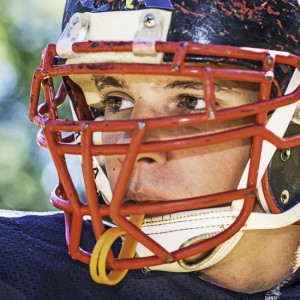 The real consequences of sports-related brain injuries and concussions in sports are coming to light, and the more we learn the worse it looks for athletes at all levels, even young players who never move beyond high school sports. Concussions are deceptive. They seem like minor injuries, and sometimes go unnoticed, but researchers who study the brains of deceased athletes are finding that concussions and sub-concussive injuries are leading to a degenerative brain disease that destroys lives.
The real consequences of sports-related brain injuries and concussions in sports are coming to light, and the more we learn the worse it looks for athletes at all levels, even young players who never move beyond high school sports. Concussions are deceptive. They seem like minor injuries, and sometimes go unnoticed, but researchers who study the brains of deceased athletes are finding that concussions and sub-concussive injuries are leading to a degenerative brain disease that destroys lives.
Chronic Traumatic Encephalopathy
Chronic traumatic encephalopathy (CTE) is a progressive degenerative brain disease that causes memory loss, dementia, and depression. In many cases it ends in suicide. Discovered as early as 1928, CTE was once thought to be suffered almost exclusively by boxers.
Researchers at the Center for the Study of Traumatic Encephalopathy at Boston University (CSTE) and Sports Legacy Institute, began studying the disease in 2009. They study the brains of decease former athletes and military veterans, and have diagnosed over 100 cases of CTE including at least 47 former NFL players, an 18-year-old high school athlete, and, most recently, Major League Baseball player, Ryan Freel.
Currently, CTE can only be conclusively diagnosed post-mortem, but new technology has been developed that may be able to detect the disease in living patients. It involves a brain scan which looks for the protein, called tau, which is found in the brains of deceased victims of CTE. Diagnosis involves more than just finding that protein, and the new brain scan is controversial, but it is at least a sign of progress toward early diagnosis and treatment which could potentially save lives and help victims retain their quality of life.
Ryan Freel
Ryan Freel committed suicide on December 21, 2012. He was only 36 years old. Freel had suffered nine or ten concussions throughout his life, and struggled with depression, memory problems, impulse control disorder, and alcohol abuse in his final years. He had become more and more isolated from friends and family, stopped spending time with his daughters before leaving and ultimately divorcing his wife, and had even contacted a doctor who was also a childhood friend, to ask if his concussions could be behind his problems.
His mother had become so concerned about his behavior and the things he said, that she had gathered up his guns and taken them out of his house. His last words were a text to his mom, “You forgot one.”
Hearing of his death and history of concussions, Boston University made to difficult call to Freel’s family, and asked for his brain. Nearly one year later, Freel’s family announced that he had been suffering from Stage II CTE at the time of his death.
CTE Risk in Youth Athletes
Chris Nowinski, co-director of CSTE, recently told ABC News, that the youngest brain the Center had diagnosed belonged to a 17-year-old, and the degenerative process may have started when the child was even younger. He says, “There is reason to believe it can begin when a child is very young.”
Just because your child has not begun to display the symptoms of CTE does not mean the disease is not present. Symptoms may not appear for months, or even decades, after the last brain injury occurred. Parents who choose to allow their children to play must be constantly vigilant and seek medical attention anytime they suspect a concussion or sub-concussive injury, because proper treatment can help prevent CTE.
While a good helmet is an important part of preventing brain injury, it does not provide protection from concussions caused by body blows. We have known for a long time that we can save lives by not allowing young players to return to the game until the brain injury has fully healed, due to the risk of second impact syndrome. Now it appears that they should not return to play at all.
Football and Hockey Players
Before Ryan Freel, CTE research focused on football and hockey players.
Dave Duerson, former NFL player, committed suicide on February 17, 2011. In text messages and a hand-written note, he said, “Please, see that my brain is given to the N.F.L.’s brain bank,” before shooting himself in the chest. He had suffered from memory problems, and spoke of blurred vision and pain in the left side of his brain in his final note. CSTE found that he did have CTE, and did not find evidence of any other disorder. Duerson was 50 years old.
In May, 2011, hockey player, Derek Boogaard, died of a drug and alcohol overdose. His family agreed to CSTE’s request to study his brain, and while they waited for the results, two more hockey players were lost. Rick Rypien and Wade Belak both committed suicide. When Boogaard’s family finally heard from researchers in October they were told that not only did he have CTE, but that the disease was shockingly advanced for someone his age. Boogaard was only 28 years old.
NFL star, Junior Seau committed suicide in May, 2012. Like Freel and Duerson, Seau shot himself in the chest. Also like Freel, he was described by his ex-wife as having become “emotionally detached” from his children, and exhibiting behavior that caused his loved ones to worry about him toward the end of his life. Seau’s brain was donated to the National Institutes of Health (NIH) which concluded that he also suffered from CTE. Although he received many hits to the head and complained of concussion symptoms, in his 20 seasons with the NFL he was never formally diagnosed with a concussion.















